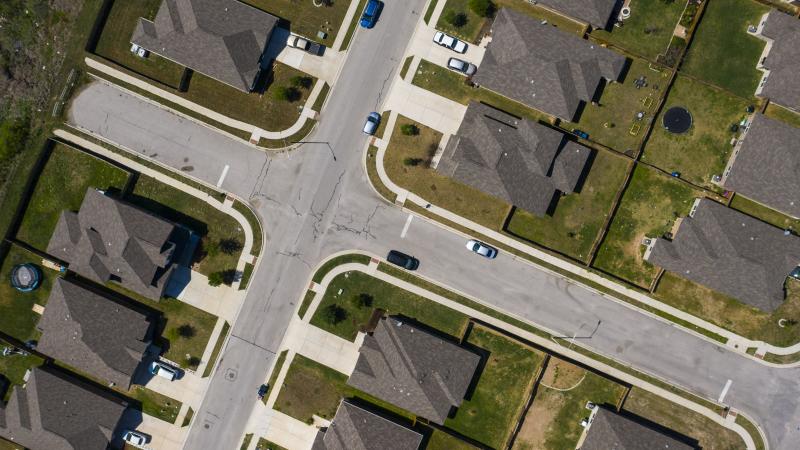'I have never seen inventory this low': Real estate prices nationwide continue upward climb
Low interest rates, low housing stock driving seller's market.
Tightly contracted inventory and low interest rates are driving a housing seller's market and pushing home prices higher.
Historical data show that housing prices in the U.S. have increased in a largely uninterrupted line since about 1970, aside from a brief plateau in the early 1990s and the sharp dip that occurred at the outset of the 2007-2008 financial crisis.
That rise has continued this year. The National Association of Realtors said in a press release last month that "every metro area tracked by [the NAR} during the third quarter of 2020 saw home prices increase from a year ago."
Across the country, "The nation's median existing single-family home price climbed 12.0% on a year-over-year basis," the group reported.
Those increases were driven by "record-low mortgage rates and depleted nationwide housing inventory," the NAR noted. In some areas — such as Bridgeport, Conn. and Crestview, Fla. — housing prices jumped by more than 25%.
Those climbing prices, in the end, could have a backlash effect, the NAR cautioned in a report this week. Though still elevated from the prior year, pending home sales dipped slightly in October, with NAR Chief Economist Lawrence Yun positing that the U.S. "may be starting to see rising home prices hurting affordability."
"The combination of these factors — scarce housing and low rates — plus very strong demand has pushed home prices to levels that are making it difficult to save for a down payment," Yun noted, with the effect being felt "particularly among first-time buyers, who don't have the luxury of using housing equity from a sale to use as a down payment."
"Work-from-home flexibility has also increased the demand for both primary and secondary homes," he added.
Buyers leave cities, flock to suburbs
Though the housing economy might be experiencing a slight correction due to those factors, the market is still seeing notable amounts of activity, particularly with homeowners who are looking to leave urban centers in favor of the suburbs.
Bill Gassett, a Re/Max realtor out of Hopkinton, Ma., said the housing industry is experiencing the lowest stock he's witnessed in over three decades of real estate sales.
"In my 34 years of selling homes, I have never seen inventory this low," he said. "In fact, I have never seen the market this active ever in November — it is insane."
Gassett suggested that the COVID-19 epidemic is playing a role in what kinds of property homeowners are seeking, particularly in his region about half an hour out of Boston — a possible indication that the high COVID-19 rates of high-density urban areas, along with the sporadic shuttering of restaurants, shops and other urban conveniences and diversions, may have rendered many of the advantages of city life increasingly moot.
"More and more people are exiting the city and heading to the suburbs," he said. "Covid has definitely played a part in their interest in getting out of the city."
Those trends have been observed elsewhere. Nicole Murphy, a spokeswoman for Realtor.com, pointed to a September analysis by the company's economists indicating that "home shoppers are showing an increasing preference for lower-density areas."
"The count of home shoppers viewing urban homes on realtor.com fell more than those viewing suburban homes during the peak of the COVID-19 crisis," the analysis states. "In late March, the count of shoppers viewing urban homes fell by 5.1% year-over-year compared to 3.2% for suburban shoppers."
"After real estate recovered into the summer," the report continues, "home shoppers began to view suburban homes at a greater rate. The count of shoppers viewing suburban homes grew by 53.9% year-over-year in August, compared to 50.7% growth for urban homes viewed."
Suburban homeowners are also holding onto their homes relative to homeowners in urban areas, the report observed. In August, new home listings in suburban enclaves were 4% lower than that of urban areas.
That divide was even greater within the major metropolitan areas of the U.S. "Urban sellers within the largest 10 metros are now listing properties at a rate similar to that of last year, with new listings increasing by 0.2%," the economists said. "Meanwhile, in the suburbs of the largest 10 metros, newly listed homes are still down 8.6% year-over-year."
Whether or not those economic and regional trends will hold likely depends on a number of complex factors, including the rate at which new housing is built in the country, interest rates, and the status of the coronavirus pandemic, particularly the distribution of the COVID-19 vaccine.
Still, as Gassett argued, the buyer's market seems poised to persist for the near future.
"Moving forward I see the trend continuing," he said. "I expect the spring market to be no different with prices continuing to rise."
















